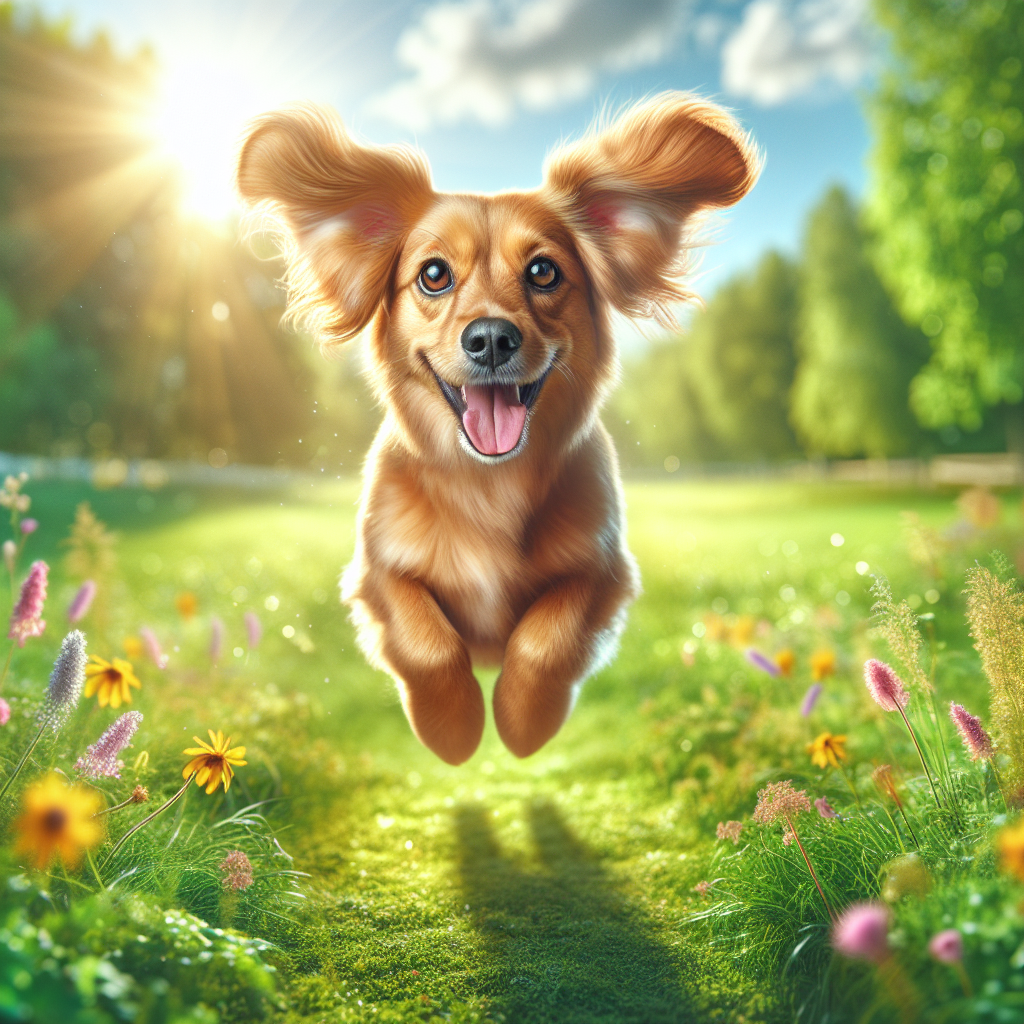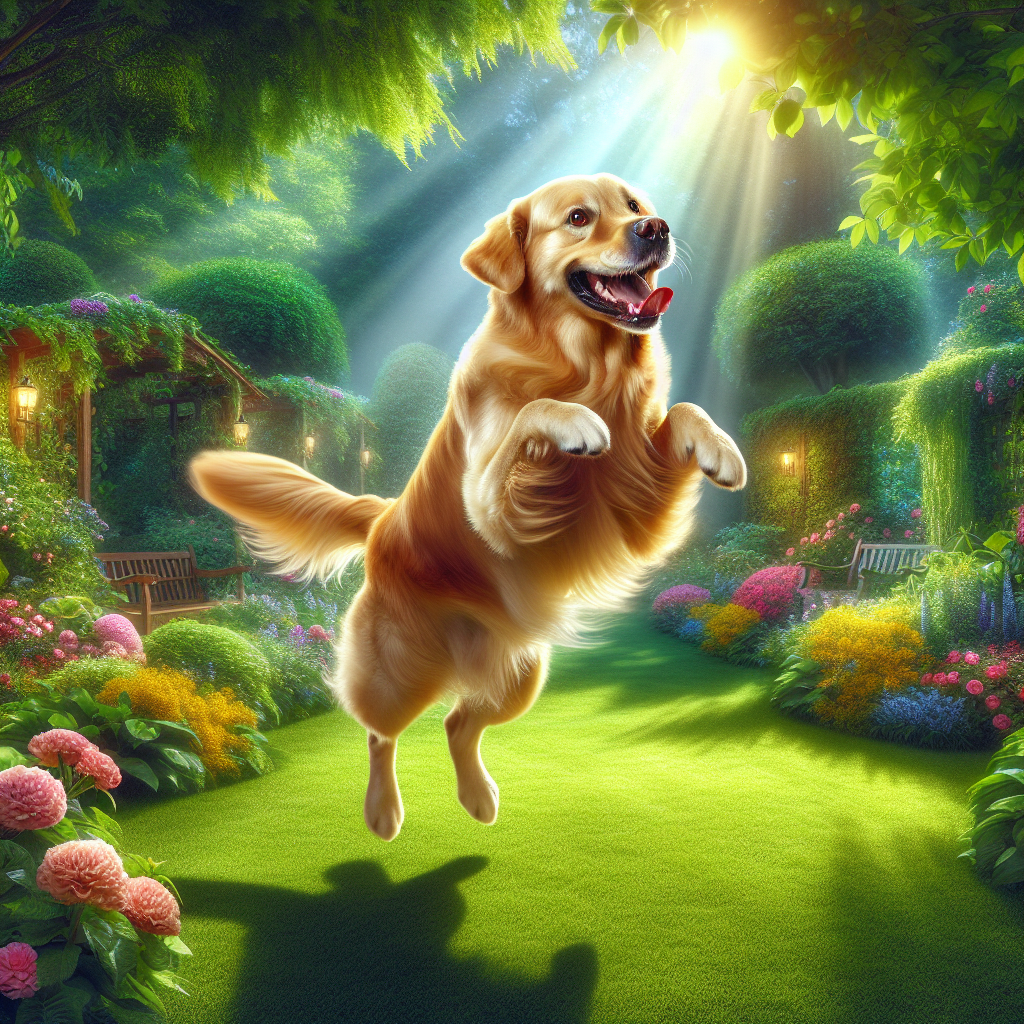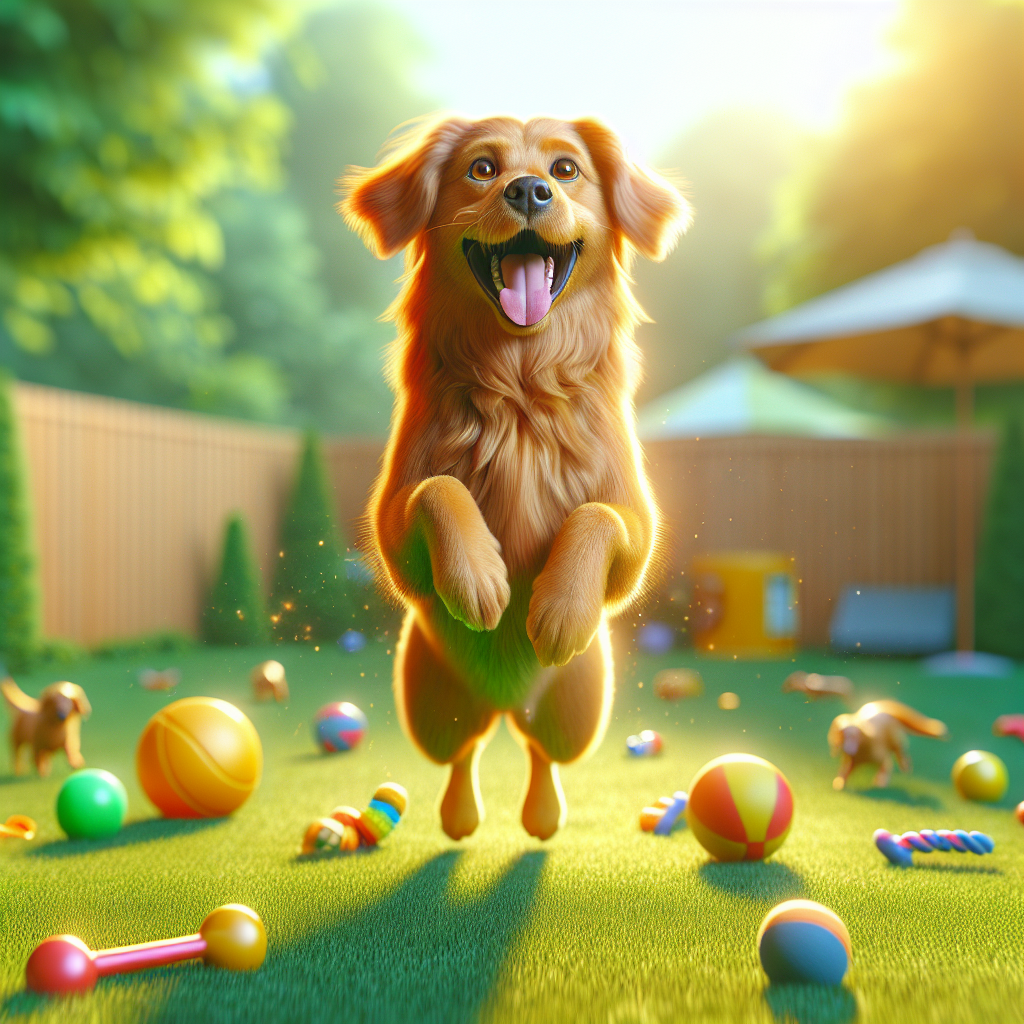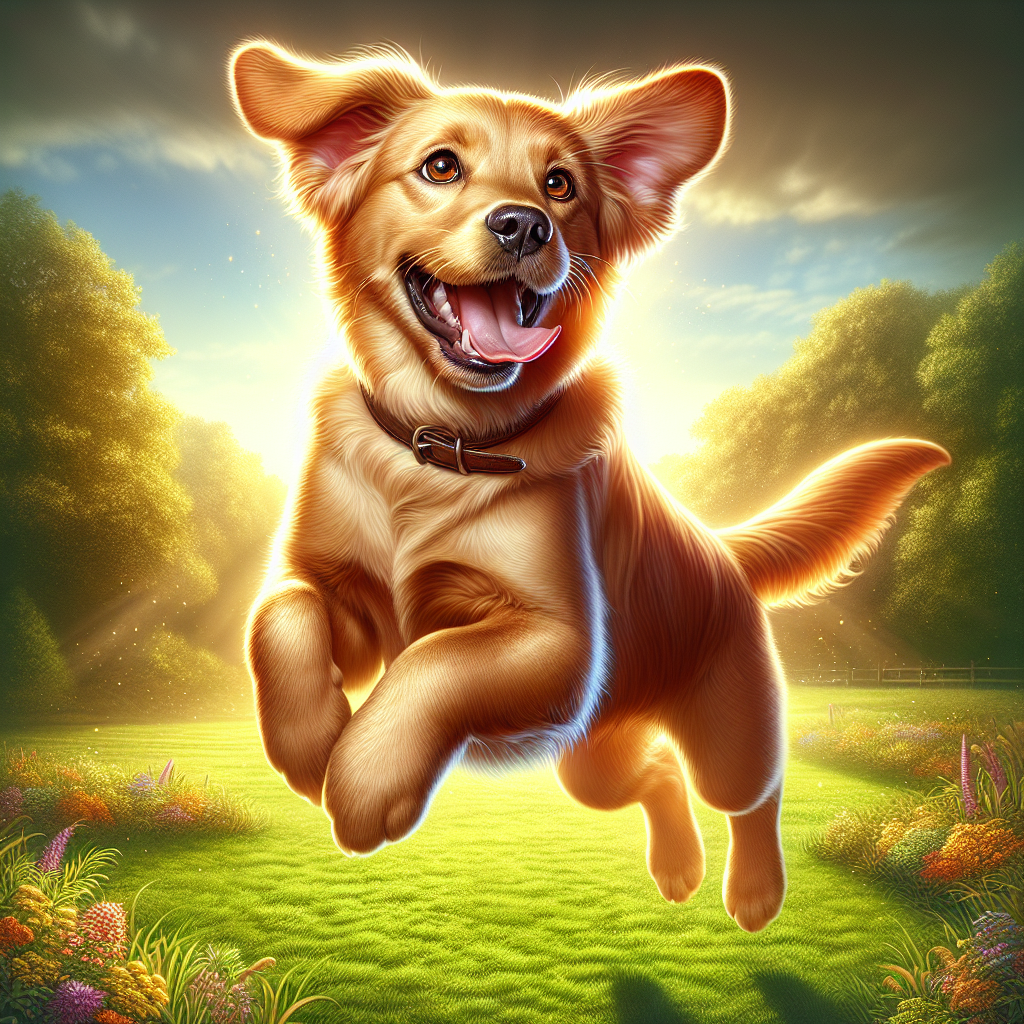How to Train Your Dog Not to Jump: Proven Techniques
Dogs are naturally exuberant creatures, and jumping up can often be a way for them to express their excitement and affection. When a dog sees a familiar face, their instinctual response might be to jump as a greeting. This behavior is rooted in their social nature—dogs are pack animals that thrive on interaction. Understanding why dogs jump up is crucial in addressing this behavior effectively.
There are several reasons why a dog may jump:
- Attention Seeking: Dogs quickly learn that jumping gets them noticed, whether it’s positive attention or negative reactions.
- Excitement: A dog may jump due to sheer excitement, especially during playtime or when seeing their owner after a long day.
- Greeting Behavior: In the wild, dogs greet one another by sniffing each other’s faces, and jumping can mimic that social greeting.
Recognizing these underlying motivations is essential for training. By understanding the reasons behind the jumping, dog owners can implement more effective strategies to teach their pets appropriate greeting behaviors. Remember, patience and consistency are key!
Treat your furry friend to the joy they deserve with our range of delicious and nutritious dog treats. Visit Happypup.dog to explore our selection that will make your dog even more eager to learn!
Establishing Clear Commands for Your Dog
Establishing clear commands is a fundamental aspect of effective dog training. By using consistent verbal cues and hand signals, you can communicate your expectations to your dog in a way they can understand. This clarity not only helps your dog learn but also strengthens the bond between you and your furry friend.
Here are some essential tips for creating and implementing clear commands:
- Choose Simple Words: Use one or two-word commands that are easy to say and remember. Commands like "sit," "stay," and "down" are effective and straightforward.
- Be Consistent: Always use the same command for the same behavior. Consistency is critical; if you vary your commands, your dog may become confused.
- Use Positive Reinforcement: Reward your dog with treats, praise, or playtime when they respond correctly to your commands. This encourages them to repeat the behavior.
- Incorporate Hand Signals: Many dogs respond well to visual cues. Pair your verbal commands with hand signals to reinforce learning.
Training sessions should be short and fun to keep your dog engaged. Gradually increase the difficulty by introducing distractions or practicing in different environments. This will help your dog to generalize the commands and obey them regardless of the setting.
Positive Reinforcement Training Techniques

Positive reinforcement training techniques are highly effective in teaching your dog desired behaviors while promoting a strong and trusting relationship between you and your pet. This approach focuses on rewarding good behavior rather than punishing undesirable actions, making the training process more enjoyable for both you and your furry friend.
Here are some key aspects of positive reinforcement training:
- Immediate Rewards: Timing is crucial in positive reinforcement. Always reward your dog immediately after they perform the desired behavior. This helps them associate the action with the reward.
- Variety of Rewards: Use a range of rewards to keep your dog motivated. Treats, toys, praise, or even a fun game can be excellent incentives. Make sure to choose rewards that your dog finds particularly appealing.
- Consistency is Key: Be consistent in your expectations and rewards. This will help your dog understand what behaviors are acceptable and which ones are not.
- Gradual Progression: Start with simple commands and gradually move to more complex behaviors. Celebrate small successes along the way to keep your dog motivated and engaged.
Remember, patience and perseverance are essential in positive reinforcement training. Each dog learns at their own pace, and using this technique can lead to lasting behavioral changes that enhance your bond.
Managing Your Dog's Environment Effectively

Managing your dog's environment effectively is a crucial element in training them not to jump. By controlling their surroundings, you can prevent unwanted jumping behaviors and create a more conducive space for learning and relaxation.
Here are some strategies to manage your dog's environment:
- Set Boundaries: Use baby gates or playpens to restrict your dog's access to certain areas of your home, especially when guests arrive. This helps in minimizing opportunities for jumping.
- Designate a Safe Space: Create a comfortable area where your dog can retreat. This space should be free from distractions and equipped with their favorite toys or a cozy bed, providing a sense of security.
- Use Leashes and Harnesses: When training in environments with potential distractions, utilize a leash or harness. This allows you to maintain control and redirect your dog if they attempt to jump.
- Introduce Guests Gradually: When visitors arrive, have your dog in a separate area until they are calm. Gradually introduce them to the guests, rewarding calm behavior to reinforce the desired response.
- Positive Associations: Make sure your dog associates positive experiences with guests. Encourage them to sit and reward them for remaining calm when visitors enter, reinforcing good behavior.
By implementing these environmental management strategies, you can create a structured and calm atmosphere that supports your dog's training and encourages positive behavior.
Consistency and Patience in Training

When it comes to how to train your dog not to jump, consistency and patience are your most valuable allies. Training a dog is not a one-time event; it’s a continuous process that requires dedication and a steady approach.
Here are some important aspects to consider for maintaining consistency and fostering patience during training:
- Establish a Routine: Dogs thrive on routine. Set specific times for training sessions, play, and feeding. Regularity helps your dog understand what to expect and when.
- Use Consistent Commands: Choose simple commands for training, such as “sit” or “stay,” and use them consistently. Avoid using different words for the same command, as this can confuse your dog.
- Reinforce Positive Behavior: Always reward your dog for good behavior immediately. Use treats, praise, or playtime as incentives, ensuring your dog associates their calm behavior with positive outcomes.
- Stay Calm and Composed: It’s essential to remain calm, even when your dog makes mistakes. Dogs can sense frustration, which may lead to anxiety and hinder their learning process.
- Be Patient: Every dog learns at their own pace. Some may grasp commands quickly, while others might take longer. Celebrating small victories and remaining patient will encourage your dog and strengthen your bond.
By embracing consistency and patience in your training efforts, you lay the groundwork for a well-behaved dog that understands expectations and responds positively to cues. These principles will contribute significantly to your success in teaching your dog to refrain from jumping.
Common Mistakes to Avoid When Training

Training your dog not to jump can be a challenging task, and it’s crucial to be aware of common mistakes that can hinder your progress. Understanding these pitfalls will help you stay on track and ensure a smoother training experience.
Here are some frequent mistakes to avoid:
- Inconsistency: One of the biggest errors is being inconsistent with commands and expectations. If you only reinforce good behavior sometimes, your dog will become confused about what is acceptable.
- Using Negative Reinforcement: Yelling or using physical punishment can create fear rather than understanding. It’s essential to focus on positive reinforcement to encourage desired behaviors.
- Training in Distractions: Trying to train your dog in a busy environment can be overwhelming for them. Start in a quiet space before gradually introducing distractions as they become more comfortable with commands.
- Ignoring Body Language: Dogs communicate through their body language. Failing to recognize signs of stress or discomfort may lead to setbacks in training. Pay attention to your dog’s cues and adjust your approach accordingly.
- Expecting Immediate Results: Training takes time, and expecting your dog to learn quickly can lead to frustration. Be patient and celebrate small achievements along the way.
By avoiding these common mistakes, you can create a more positive and effective training experience for both you and your furry friend. Remember, treat your furry friend to the joy they deserve with our range of delicious and nutritious dog treats to reinforce their good behavior and enhance your training sessions.






